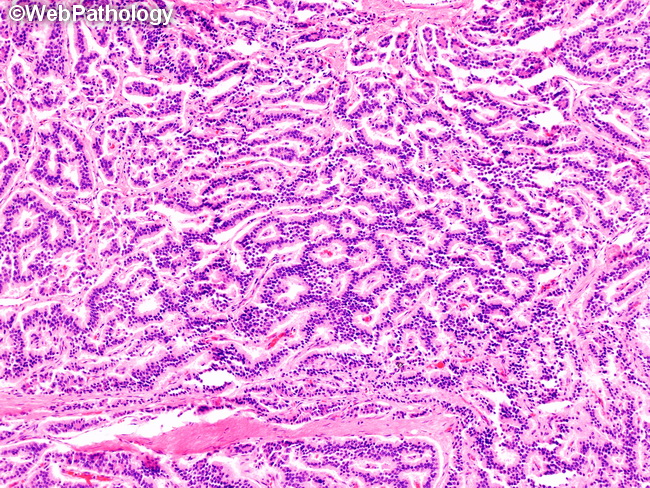Glucagonoma : Introduction


Comments:
Introduction: Glucagonoma is the 4th most common functioning pancreatic neuroendocrine tumor (after insulinoma, gastrinoma, and VIPoma) and accounts for 1-2% of all PanNETs. It secretes excessive amounts of glucagon causing a distinctive syndrome consisting of glucose intolerance, anemia, weight loss, depression, and skin rash (necrolytic migratory erythema). The 5D's of glucagonoma: diabetes, dizziness, dermatitis, depression and deep vein thrombosis. It is usually sporadic; about 13%-17% of cases have MEN type 1. However, very few MEN 1 patients develop glucagonoma. Most glucagonomas are malignant, and about 75% of cases are ultimately fatal. Elevated glucagon levels without glucagonoma syndrome may be seen in an autosomal recessive benign condition called glucagon cell hyperplasia and neoplasia (GCHN) resulting from germline mutations in GCGR. The image illustrates the well-differentiated nature of most glucagonomas, notwithstanding their malignant behavior.


